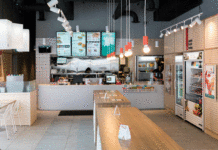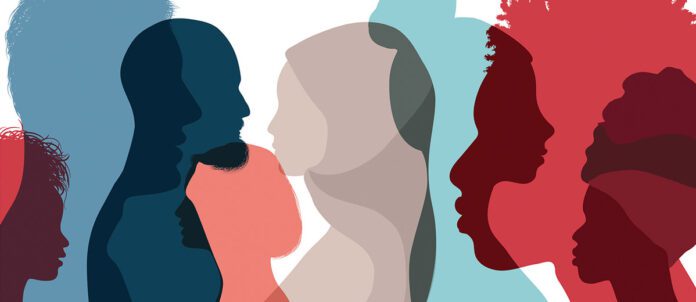By Amy Bostock
When Hassel Aviles first started openly sharing her story about her mental-health challenges, depression and anxiety in 2018, she started normalizing these conversations for herself. “And then I started going on panels, doing it publicly in front of strangers and engaging the industry with these conversations.”
At the time, she recalls, there was a lot of resistance. “There still is a lot of resistance today, but there was even more back then because this was not a normalized conversation,” says Aviles, co-founder and executive director of Toronto-based Not 9 to 5, a non-profit global leader in mental-health training and advocacy for the foodservice-and-hospitality sector. She adds that a lot of people wanted to talk about mental health at the time, but not in public. “There’s still a lot of stigmas, and a big part of the work we were doing back then was around creating awareness.”
And then, in June 2018, celebrity chef Anthony Bourdain took his own life. “A big shift started — one of the first big shifts I saw — because it became so apparent that mental-health challenges can happen to anyone and everyone,” says Aviles. “It doesn’t discriminate based on who you are, or how much money you have, or if you’re a television star.”
In 2020, Not 9 to 5 created a mental health and addiction survey for the hospitality industry and the results told an alarming story. When asked, “Do you live with mental health and/or addiction challenges?” 90 per cent of hospitality workers answered yes. In fact, the food-and-beverage service industry ranks in the top-three worst workplaces for mental health, as stated by Mental Health America (2017), due to a combination of toxic work environments and a lack of available support and resources from the top down (Cheang, 2017). According to the Mental Health Commission of Canada, substance use, socio-economic insecurity and unemployment are high-risk factors for suicide and suicidal behaviour; factors that are endemic to the foodservice industry (Mental Health Commission of Canada, 2020).
“From the perspective of people that are experiencing [mental-health challenges], there’s still a lot of shame and on the employer side, a lot of them are unequipped for the jobs that they have in terms of managing people,” says Aviles, adding there’s antiquated systems in place that keep people silent and oppressed — systems that are normalized — such as the brigade system in kitchens. “And it’s not just kitchens anymore; the brigade system has seeped out of kitchens into every aspect of the industry. And it normalizes a hierarchical organizational structure that is based on fear and authority. And while initially, in the late 19th century when this first started, it was meant to be in the name of efficiency, in actuality, it’s dehumanizing.”
She says a byproduct of this culture is that people are told that their emotional experiences have to be repressed and suppressed. “And there’s also a culture of mistakes being penalized and inducing shame around mistakes versus seeing mistakes as part of a natural human learning process.”
Money Talks
According to Deloitte Canada, the negative impact poor workplace mental health has on Canada’s economy is staggering. The company’s first-of-its-kind Canadian research, released pre-pandemic, found that positive returns on investment (ROI) of workplace mental-health initiatives are within reach for Canadian businesses and revealed that companies with mental-health programs in place for one year had a median annual ROI of $1.62 for every dollar invested. For companies with programs in place for three or more years, the median annual ROI is more than double — valued at $2.18 for every dollar spent.
The report, The ROI in workplace mental health programs: Good for people, good for business, explores historical investment and savings data from seven large Canadian companies at various stages of rolling out mental-health programs and supports.
“There’s both an economic and moral imperative for Canadian employers to take action, recognizing that the cost to the Canadian economy of poor mental health in our workplaces is estimated to be $50 billion annually,” says Anthony Viel, Chief Executive Officer, Deloitte Canada in the report. “The findings from this report provide a business case that is impossible to ignore. Organizations committed to delivering and measuring impactful employee wellness programs are creating healthier workplaces and seeing investments in their people’s mental health pay off.”
In Canada, although foodservice remains one of the top employers, the industry has huge challenges filling vacancies. Restaurants Canada reports the industry is lagging behind other sectors when it comes to job recovery. In June 2022, there were 171,715 job vacancies, a threefold increase from pre-pandemic levels. The industry’s exceptionally high employee turnover rate is important because finding, hiring, and training new employees costs a great deal of money. In addition to the expenses involved in onboarding new workers, high staff turnover can also have a negative impact on employee morale, productivity, and customer experience.
Kris Hall, founder of U.K.-based The Burnt Chef Project — a global not-for-profit founded in 2019 that provides hospitality professionals in 120 countries with mental health and leadership training and education, support services, data collection and fundraising activities — agrees there’s a strong business case for offering mental-health support to foodservice employees. “We’re actually starting to make sure that people are feeling like there’s work-life balance, that they have the right culture and that they’ve been well looked after physically and mentally, because they’ll perform better for you, and they’ll stay in your organization longer,” he says, adding “we complain that customers won’t pay more for their meal, when food costs have risen. We’re making maybe two-per-cent margin. But if we’re not looking after the people, turnover rates are 125 per cent on average, which costs employers between $2,500 and $4,000 per person as a result of them walking out the door.”
Aviles points out that every time an employer invests in someone with workplace mental-health training or education, there’s a return on that money. “And obviously, the more you invest in for a longer period of time, the higher the return. I don’t think our industry knows this; I think our industry is still stuck and thinking of this as a ‘nice thing to do.’ It’s not about nice, it’s not about being kind and this isn’t about empathy or compassion. I mean, obviously, that comes with it, hopefully, for people, but that’s not the only reason. There’s a huge return on investment, it decreases employee turnover, it increases innovation, retention and creativity within the workplace and psychological safety. There’s just so many benefits to investing in workplace mental health, education and training/programming. There is a massive business case and I don’t think our industry is aware. We have a lot of conversations around the problems, but we don’t have a lot of conversations about the solutions.”
Changing his tune
For Brendan Piunno, who had his first restaurant job at age 14, the hospitality industry is all he’s ever known. But after more than 20 years of working in restaurants, his career began to take a serious toll on his mental health. “We started losing people for good and not just from quitting. I worked with a manager that passed away from drugs and alcohol and that became a very common story over time. It got to the point where, for me, I couldn’t see that anymore,” says Piunno, who is now partner, and COO of Piano Piano in Toronto.
He began to see that the first step to solving any problem is realizing there is one. “There’s a huge need for mental-health support in this industry. It’s a very fast-paced, hectic, hard industry to be in.” In fact, a Statistics Canada study found that hospitality workers have the worst job quality out of any industry, due largely to low earnings, the inability to take time off, no paid sick leave, a lack of training opportunities and no supplemental medical and dental care.
Piunno feels that not a lot of people outside of the restaurant industry completely understand that. “So, it was time to start making a move to support the people that work for us [at Piano Piano]. I don’t think anybody goes into hospitality unless they have a passion or a love for it. But everybody needs to also love themselves first before they can start loving the industry they’re in.”
He’s a huge advocate for “finding that person you can talk to, to kind of lighten the burden, and to be able to go into work and not have that carried around with you. I know personally, that when I go into work now, I’m a different person than what I was before I started therapy. And I’m forever thankful for the people that that pushed me into seeking that help. Because it’s scary to get started.”
When it comes to showing the business case for mental-health training and support in the industry, he says “the hard part for us is it’s almost like the ‘you can lead a horse to water but can’t make it drink’ kind of scenario. We have all of these programs in place, but we can’t make anybody use them, even though we know that everybody would be would benefit from them.”
The other challenge operators face, he says, is that offering mental-health support in the workplace has to be an all-in commitment from the top down to break down the stigma.
Piunno stresses that seeking help for your mental health does not mean you’re failing. “I used to think that way, too. I thought I wasn’t strong enough and I saw it as a failure, and that mindset is what has to stop.” At Piano Piano, management has invested heavily in caring for its employees’ mental health, rolling out support programs through Inkblot, a Toronto-based EAP (employee assistance program) offering personalized, accessible and confidential mental health and well-being support for individuals and organizations.
“The next thing we’re looking at is an opt-in scenario. Just because the benefits are there doesn’t mean you’re going to use it, so we’re allowing people to opt into some of these programs. Financially, it’s a big impact on the restaurant — the restaurant industry has razor-thin margins — but we’re trying to offer this to as many people as we can because we believe that there is a huge return on people’s mental health when they access this type of support.”
As the industry starts to support people’s mental health, Piunno believes employees will be more likely to stay in the industry.
“From what we’ve seen at Piano Piano, and I can only speak to that, the more you can give to an employee, the more programs you can have in place for the people that want to opt into them, the lower the turnover. We have a very, very low turnover rate at Piano Piano and that’s something we’re very proud of. And I believe it’s because of the support that we give.”
Star power
With the recent arrival of the Michelin Guide in Canada (Toronto and Vancouver), many people have been critical of the process of achieving Michelin stars, calling the system antiquated. Hall says while Michelin is a great driver for people wanting to achieve great things in the industry, at The Burnt Chef Project, he’s working on creating an accreditation system based on psychological safety and backed in scientific data. “At some stage in the next five years, we want to be able go to Michelin with [a ranking] that actually rewards businesses for sustainable practices. And people that have it should be the new gold standard, because it shows that people aren’t being harmed to achieve it.”
He adds that it shouldn’t be a separate recognition, but built into the overall criteria. “If you’re going to get a star at all, it’s not just front-of-house service, food, wine and decor; let’s spend a day or two in the back of house and with the actual teams in the trenches and see how it’s being run. Let’s look at the books and see how these people are getting paid? Are they getting a living wage? And what is the morale and the culture like behind the scenes? Customers should be having that insight into what actually happens at these restaurants and what it takes to offer that level of service. And I feel Michelin Guide has that exposure, that reach, and they should be tackling it head on if they are really that interested in making sure our industry is the best industry. So, I think it’s nice to have an award system. Michelin’s well respected and it does drive people to perform and to achieve great things, but it needs a refresh.”
The path to change
Chef Imrun Texeira, owner/chef of Wanderlust Dining, a luxury culinary brand, grew up in a “more old school era of restaurant culture and now, being on the other side of it, I was in this weird middle ground of seeing the old school [practices] while being part of the new-school generation coming in. And it’s hard for me now to make that transition, getting out of what I thought was so normal. I see restaurants gaining acclaim around the world, but how these restaurants run behind the scenes is obviously not sustainable. It’s amazing to get recognition for what we do in front of the guests in the dining rooms, but if, behind the scenes it’s all dirty and chaos, it’s success at what cost?”
Texeira, who advocates for better working conditions and mental-health support for those in hospitality as the Canadian Ambassador for The Burnt Chef Project, says the current reality is that in order to work in hospitality and to receive recognition and acclaim, you have to sacrifice your life and your health. “And it shouldn’t be a sacrifice. This is a professional choice, right? It’s a fantastic industry, and we love it dearly. But why should people have to end up with diabetes or heart disease or depression, suicide in order to be able to pursue that career? You wouldn’t expect that in any other sector.”
The foodservice industry is not unique with regard to mental illness challenges, but Texeira says it’s seen as more of a badge of honour to be burning out but still coming to work. “But the real badge of honour should be that your restaurant has a great retention rate, happy staff, a good culture. I take a week off at a time and I’m okay with that. That should be the new normal. But there’s a generational thing with the old-school mentality of ‘well, we were caught up, punched and kicked and burnt and brutalized, but it’s better now, so stop complaining.’ But that mentality needs to move on and either get with the times, adjust, or have to wait patiently until you leave. And then we’ll be able to really start to change”
Helping hands
Normalizing mental health is the first step to making this change and creating a healthy workplace, says Debbie Garshon, Clinical Lead at Inkblot. “It’s creating a culture of awareness and openness around mental health. Because in order to break the stigma, you need to be open, accepting and acknowledging that it’s normal for people to sometimes have really bad days.”
She explains that restaurant employees are under a great deal of pressure due to the fast-paced nature of the job, which contributes to mental-health challenges. “A lot of employees are afraid to come forward and let [employers] know they’re having mental-health challenges, and they might fear being judged. So, speak to the team, make them aware of the importance of mental well being, of taking care of yourself. Perhaps offer mental-health days and let them know we’re all going to be there for each other, so it’s okay to call in sick.”
She says education is key to helping identify others who are struggling. “It might be someone like an EAP company coming in to train the staff. If you demonstrate the value of mental health, in the workplace to your team, they’re going to feel more comfortable about either speaking up around it, or taking care of their own mental health, because they will understand that they need to do that.”


















